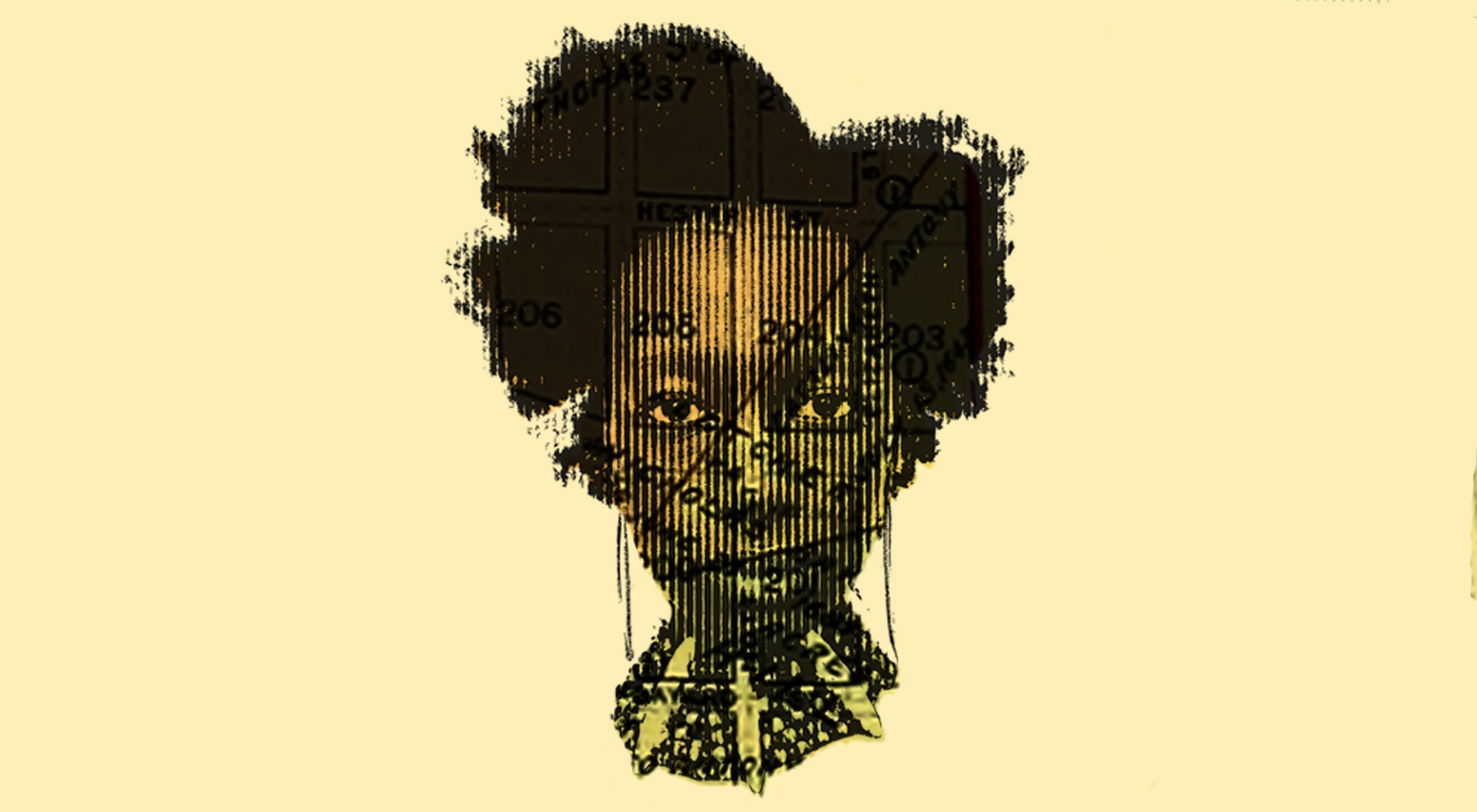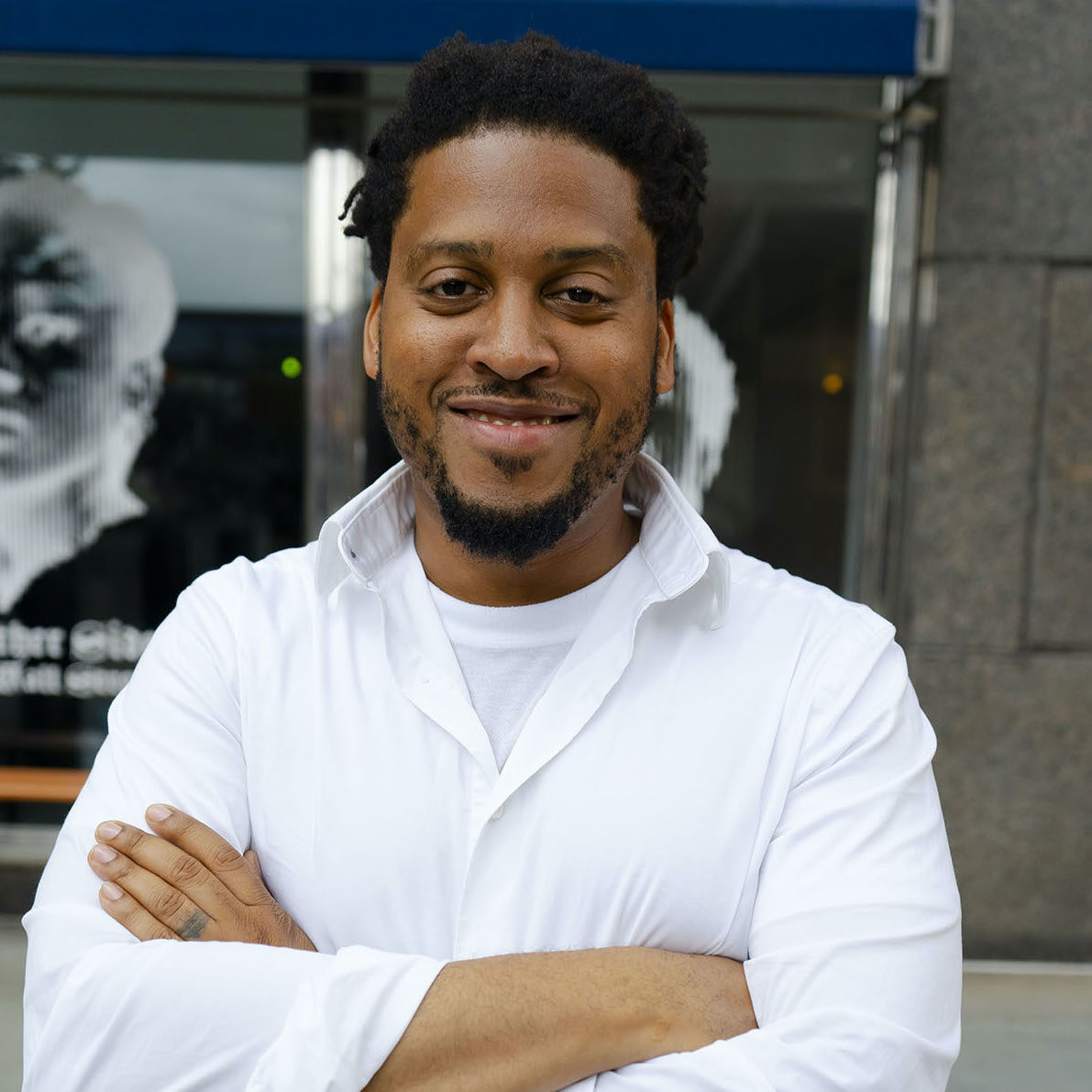
Land of the Blacks
An essay by Kamau Ware
THE BIG PICTURE
“Where were the Black people?” she asked me. I have not been the same since.
The inspiration to create an organization that leads walks, produces events, and creates artifacts of the African Diaspora was born from this question, from a Black girl on a middle school field trip in 2008, while I was working as an educator at a museum.
On a warm Saturday August 28th 2010, I gave the first Black Gotham Experience walking tour tracing the narratives of African life in Lower Manhattan. More than ten years later, I’m still learning. But I discovered early that listening is more important than memorizing facts.
I have been to multiple countries, archives, and libraries to answer that question in new ways. What has been pivotal in our practice is listening, and not just listening to people with great questions but searching for the voice of those whose stories we tell. What are their questions? What are your questions?
There are a number of souls I have been keen to listen to: the landowning people of African descent with 28 adjoining farms known as the Land of the Blacks dating back to the 1640s. These farms were about 130 acres, which would have been twice the size of SoHo today. This relatively large number of autonomous Black people living outside the city limits was also rather shocking to the English who took the town of New Amsterdam and the surrounding region in 1664. Black people getting married in church, baptizing children, and owning land was palatable enough in the mid-17th century to become a reality yet centuries later, the idea of Black people owning neighborhoods juxtaposed to gentrification teases the best brain. The Land of the Blacks provides some of the most compelling stories that refuse reductive titles such as “slave” or even “free”. This community is key to understanding the shift between a system of enslavement initiated by the Portuguese in the 1500s that was in flux under the Dutch in the 1600s. Many of these landowning Blacks were pirated from Central Africa during the Eighty Years War [1568-1648] between the Iberians and the Dutch. When you connect these dots to the times of British New York and then the United States, we have a time map of Black history from the 15th century to the present on the island of Manhattan. It is important to pause and pay homage to these stories rising out of obfuscation to become part of our social consciousness. It is particularly important for us at the Black Gotham Experience, to reflect upon our origins and some of the lessons we have learned since 2008 when this creative intervention started with a question.
WHERE. Where were the Black people? A question spins on an adverb seeking quality of position. In what condition were Black people when immigrants crossed Delancey Street to and from tenements, before the new negroes movement redefined Harlem, before Brooklyn was a borough? When a young Black girl asked the question in 2008, it was unknown to us both that we were standing in the footprint of Bastaen, a Black landowner from the Land of the Blacks. His neighbors, Francisco and Anthony, two other people of African descent that crossed the ocean to arrive on this island Manahatta. Perhaps that little girl was an angel, an ancestral figure touching off a series of curiosities - creating cocoons that would bloom wings for an Afro Future.
I found out where the Black people were. Before New York’s namesake was old enough to have ambitions of building an English empire from enslaving people, Black folk were pushing the boundaries of freedom on a Dutch outpost on Lenape land. They followed the scent of autonomy. That aroma was left by souls like Juan Rodriquez from Santo Domingo that called these islands home in 1613 before the arrival of those who sought to purchase it in 1626. That energy resonates from the Lenape themselves who knew these lands for thousands of years and know them still. The Blacks paved roads and completed public works that are the elements of origin to the outpost and soon to be city of New Amsterdam. Atop the paved streets came the churches, forts, and city hall. Along the paved streets we ran shops, loaded at the docks, sold oysters, and were pivotal to the changing cash crops - usually denied the sweetness of gratitude or the comfort of shelter. A winding path opening space to claim parcels of land adjacent to the Negro Burial Ground and east of the Collect Pond. Today’s south eastern corner of Chinatown. First Domingo Anthony and Catalina Anthony in 1643. Then Manuel Trumpeter, Anthony Portuguese in what is now Washington Square Park. Paulo D’Angola. Manual Gerrit de Reus. And there were more and there is now. Black people seek autonomy from an airborne cognitive illness that erases our souls so we are only seen as tools.
Where were the Black people? Right here - fighting erasure. Winning space to define a place for rest because we are tired of building up cities in the day that chase us through the night. We know where the Black people were. We’ve been talking about it on walking tours, at conferences, in universities, and virtually to thousands of souls for over a decade. We point and we name what used to be and who was here. Not all landowners. Many landless, nameless, and thankless - but all too often cast into a psychic box labeled “slaves” or “half-free”.
We know the Blacks were in the middle of rebellion before the American Revolution. Holding on to less and less land as the economies of enslavement became more sophisticated. Setting fires to orchards to resist British tyranny was necessary. Inventing new food ways was necessary. Remixing dance and pushing the edges of language was necessary. Making record players instruments - blending loops to compose new pathways in sound was necessary. Necessary, survival and also protection. Our talents are the guardians of our lands. Our real estate is our souls - our connection to spirit. The Land of the Blacks is our fertile hearts and cannot be taken with primitive notions of humanity. The Land of the Blacks is not solely measured in acres nor defined by corners but passed on like a deed to a celestial land of creativity.
I often ask myself: where? Where is this child that asked me that life changing question in the spring of 2008? Where is that soul that looked me in my eyes and set my north star with an interstellar interrogative when Barack Obama was still a Senator. Thirteen years later, she should be in her mid-twenties now. I hope the world has listened to her questions. I hope this world that carries a particular poison for Black girls has parted for her steps as she moved into adulthood. I hope that someday she will know that she started a movement and connected cycles in time. Her voice has changed New York City and blessed us with a harvest that cannot be stolen.
THE INVITATION
We are on the edge of our next chapter.
We will continue to walk these streets and now, we want to permanently mark these locations where the Land of the Blacks existed.
Our goal is to continue inviting people of African descent to play the role of these erased figures and place them on flags that do not take land away but encourage conversation. We want to put the pedagogy in the public square using art and technology to scale these conversations around the world and in ceremony right here on this storied island.
Let our generations work together and support an effort to link the stories between the Lenape and their diaspora, displaced Africans, colonization, enslavement, resistance, and the presence of the past in our society today. Plant more questions.

Kamau Ware is an award-winning visual artist and storyteller based in New York City. Kamau creates new narratives about the African Diaspora’s history through photography, films, exhibitions and events. He founded the Black Gotham Experience (BGX) in 2010 to illustrate the impact of the African Diaspora through art and walking tours that ask participants to embody historic figures through imagination and empathy. The Black Gotham Experience has been in residence in the Seaport District of Lower Manhattan since 2017, serving as a gallery, event space, and visitor’s center for walking tours. It is also where contemporary artifacts are being created that visualize the rise and fall of the Transatlantic Slave Trade as one global epic from the Black perspective that will populate a graphic novel and exhibition series.
Through his visual storytelling, Kamau has become a sought after voice, an artist / historian illustrating the erased presence of Black people in the collective consciousness and a creative that fuses aesthetics into shared experiences. Kamau has been commissioned to create original works by the Lower Manhattan Cultural Council, BRIC Media, the Mile Long Opera, and the first Black history walking tour of New York City Hall by the New York City Public Design Commission. Kamau has recently completed new works for Think Chinatown, Open House New York, The Shed, and the World Trade Center Oculus. Kamau has spoken at SXSW, Yale University, John Hopkins University, the Municipal Archive in Amsterdam, the Public Theater, the Apple flagship store, and has been featured in The Atlantic, The New York Times, Atlas Obscura, Hyperallergic, Curbed, ABC, NBC, and AdWeek.
